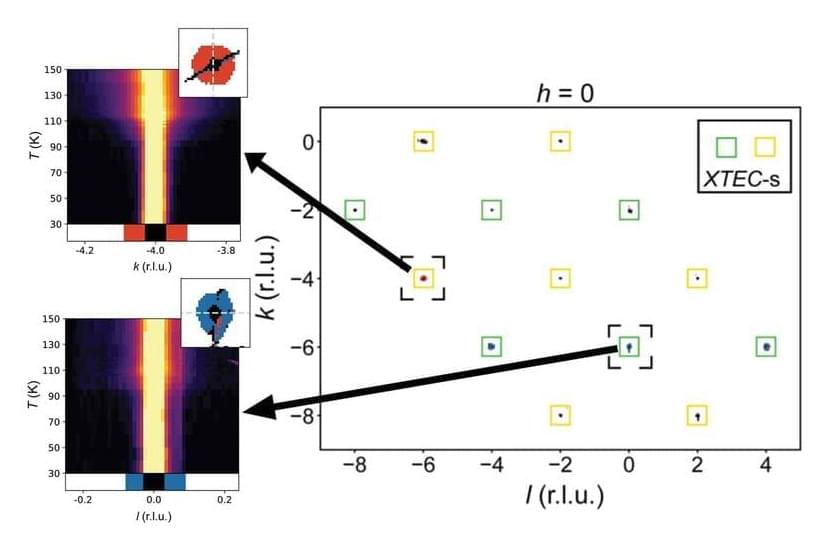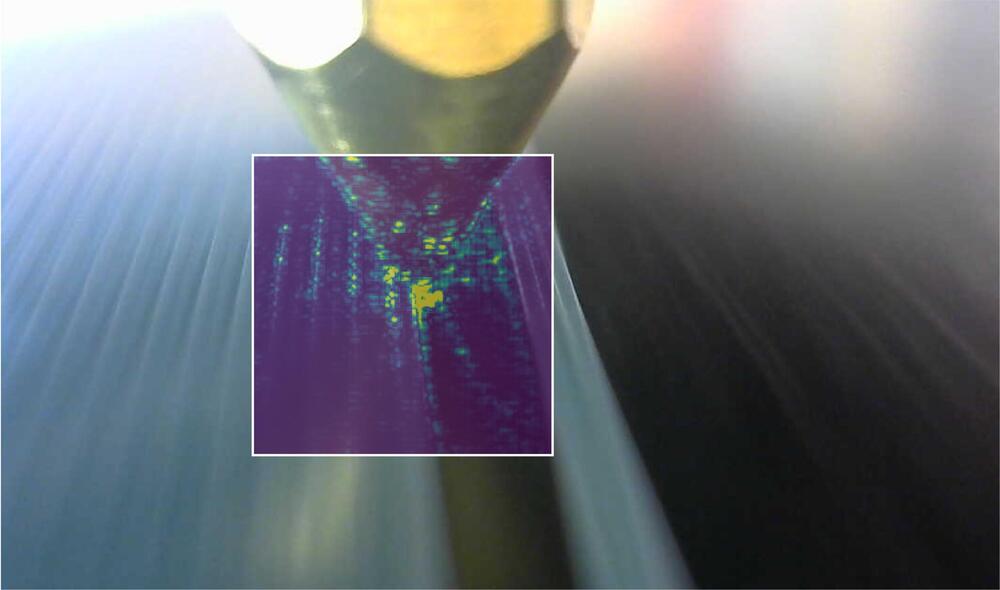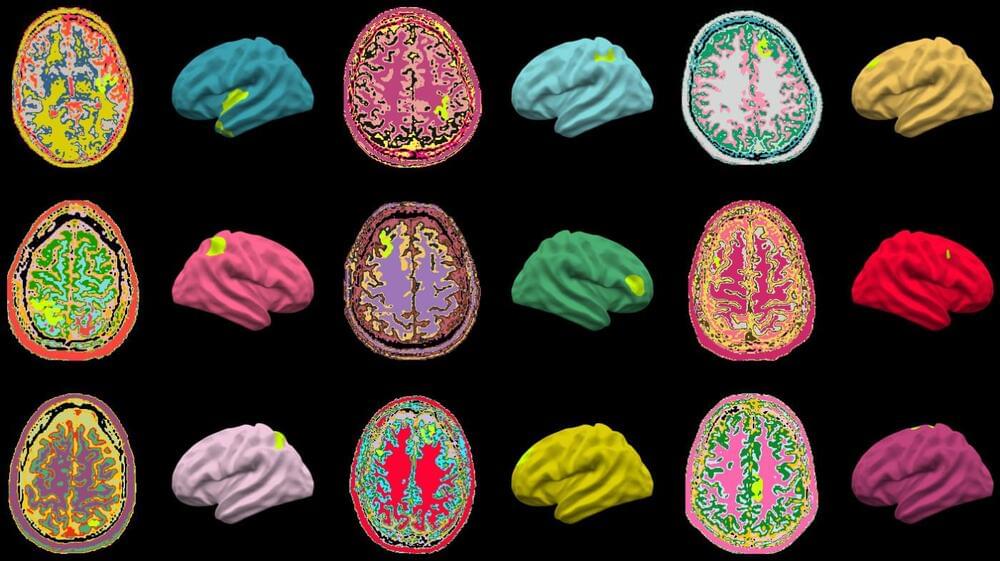Google AI announced the launch of the Google Research YouTube channel today. The channel is set to focus on a wide range of subjects like AI/ML, robotics, theory and algorithms, quantum computing, health and bioscience.
Category: information science – Page 183


11 Top Experts: Quantum Top Trends 2023 And 2030
Quantum Information Science / Quantum Computing (QIS / QC) continues to make substantial progress into 2023 with commercial applications coming where difficult practical problems can be solved significantly faster using QC (quantum advantage) and QC solving seemingly impossible problems and test cases (not practical problems) that for classical computers such as supercomputers would take thousands of years or beyond classical computing capabilities (quantum supremacy). Often the two terms are interchanged. Claims of quantum advantage or quantum supremacy, at times, are able to be challenged through new algorithms on classical computers.
The potential is for hybrid systems with quantum computers and classical computers such as supercomputers (and perhaps analog computing in the future) could operate in the thousands and potentially millions of times faster in lending more understanding into intractable challenges and problems. Imagine the possibilities and the implications for the benefit of Earth’s ecosystems and humankind significantly impacting in dozens of areas of computational science such as big data analytics, weather forecasting, aerospace and novel transportation engineering, novel new energy paradigms such as renewable energy, healthcare and drug discovery, omics (genomics, transcriptomics, proteomics, metabolomic), economics, AI, large-scale simulations, financial services, new materials, optimization challenges, … endless.
The stakes are so high in competitive and strategic advantage that top corporations and governments are investing in and working with QIS / QC. (See my Forbes article: Government Deep Tech 2022 Top Funding Focus Explainable AI, Photonics, Quantum—they (BDC Deep Tech Fund) invested in QC company Xanadu). For the US, in 2018, there is the USD $1.2 billion National Quantum Initiative Act and related U.S. Department of Energy providing USD $625 million over five years for five quantum information research hubs led by national laboratories: Argonne, Brookhaven, Fermi, Lawrence Berkeley and Oak Ridge. In August 2022, the US CHIPS and Science Act providing hundreds of millions in funding as well. Coverage includes: accelerating the discovery of quantum applications; growing a diverse and domestic quantum workforce; development of critical infrastructure and standardization of cutting-edge R&D.

Uncovering nature’s patterns at the atomic scale in living color
Color coding makes aerial maps much more easily understood. Through color, we can tell at a glance where there is a road, forest, desert, city, river or lake.
Working with several universities, the U.S. Department of Energy’s (DOE) Argonne National Laboratory has devised a method for creating color-coded graphs of large volumes of data from X-ray analysis. This new tool uses computational data sorting to find clusters related to physical properties, such as an atomic distortion in a crystal structure. It should greatly accelerate future research on structural changes on the atomic scale induced by varying temperature.
The research team published their findings in the Proceedings of the National Academy of Sciences in an article titled “Harnessing interpretable and unsupervised machine learning to address big data from modern X-ray diffraction.”

Algorithm learns to correct 3D printing errors for different parts, materials and systems
Engineers have created intelligent 3D printers that can quickly detect and correct errors, even in previously unseen designs, or unfamiliar materials like ketchup and mayonnaise, by learning from the experiences of other machines.
The engineers, from the University of Cambridge, developed a machine learning algorithm that can detect and correct a wide variety of different errors in real time, and can be easily added to new or existing machines to enhance their capabilities. 3D printers using the algorithm could also learn how to print new materials by themselves. Details of their low-cost approach are reported in the journal Nature Communications.
3D printing has the potential to revolutionize the production of complex and customized parts, such as aircraft components, personalized medical implants, or even intricate sweets, and could also transform manufacturing supply chains. However, it is also vulnerable to production errors, from small-scale inaccuracies and mechanical weaknesses through to total build failures.

Brain Abnormalities in Epilepsy Detected by New AI Algorithm
An artificial intelligence (AI) algorithm to detect subtle brain abnormalities that cause epileptic seizures has been developed. The abnormalities, known as focal cortical dysplasias (FCDs), can often be treated with surgery but are difficult to visualize on an MRI. The new algorithm is expected to give physicians greater confidence in identifying FCDs in patients with epilepsy.
The work, which was part of the Multicentre Epilepsy Lesion Detection (MELD) project, appeared in Brain “Interpretable surface-based detection of focal cortical dysplasias: a Multi-centre Epilepsy Lesion Detection study.” Konrad Wagstyl, PhD, and Sophie Adler, PhD, both from University College London, led an international team of researchers on the work.
To develop the algorithm, the team quantified features of the brain cortex—such as thickness and folding—in more than 1,000 patient MRI scans from 22 epilepsy centers around the world. They then trained the algorithm on examples labeled by expert radiologists as either being healthy or having FCD.

In simulation of how water freezes, artificial intelligence breaks the ice
A team based at Princeton University has accurately simulated the initial steps of ice formation by applying artificial intelligence (AI) to solving equations that govern the quantum behavior of individual atoms and molecules.
The resulting simulation describes how water molecules transition into solid ice with quantum accuracy. This level of accuracy, once thought unreachable due to the amount of computing power it would require, became possible when the researchers incorporated deep neural networks, a form of artificial intelligence, into their methods. The study was published in the journal Proceedings of the National Academy of Sciences.
“In a sense, this is like a dream come true,” said Roberto Car, Princeton’s Ralph W. *31 Dornte Professor in Chemistry, who co-pioneered the approach of simulating molecular behaviors based on the underlying quantum laws more than 35 years ago. “Our hope then was that eventually we would be able to study systems like this one, but it was not possible without further conceptual development, and that development came via a completely different field, that of artificial intelligence and data science.”
The Holographic Principle, Quantum Mechanics, and Simulated Reality (SR)
TWITTER https://twitter.com/Transhumanian.
PATREON https://www.patreon.com/transhumania.
BITCOIN 14ZMLNppEdZCN4bu8FB1BwDaxbWteQKs8i.
BITCOIN CASH 1LhXJjN4FrfJh8LywR3dLG2uGXSaZjey9f.
ETHEREUM 0x1f89b261562C8D4C14aA01590EB42b2378572164
LITECOIN LdB94n8sTUXBto5ZKt82YhEsEmxomFGz3j.
CHAINLINK 0xDF560E12fF416eC2D4BAECC66E323C56af2f6666.
KEYWORDS:
Scienc, Technology, Philosophy, Futurism, Simulation, Simulationism, Ockham’s Razor, Argument, Hypothesis, Anthropic Principle, Holographic Principle, Holographic Universe theory, Brain in a Vat, Brain in a Jar, Matrix, Inception, Hologram, Artificial Intelligence, Vocaloid Hologram, Reality, Ontology, Epistemology, Elon Musk, Solipsism, Illusion, Renee Descartes, George Berkeley, Materialism, Idealism, Solipsism, Cogito Ergo Sum, Esse es Percepi, Gilbert Harman, Hillary Putnam, Robert Nozick, The Experience Machine, Multiverse, Omniverse, Black Hole Hologram, Event Horizon, Singularity, Moore’s Law, Black Dual Linear Error Correcting Code, Jim James Sylvester Gates, Neil DeGrasse Tyson, Plato’s Cave, Quantum Mechanics, Schrondinger’s Cat, Observer Effect, Double-Slit Experiment, Heisenberg Uncertainty Principle, Artificial Intelligence, Quantum Superdeterminism, Free Will, Albert Einstein, Stephen Hawking, Quantum Gravity Research, Eugene Vignor, Consciousness, Fermi Paradox, SETI (search for extraterrestrial intelligence), Drake Equation, Alpha Centauri, Wave Function Collapse, Video Games, VR, Virtual Reality, God, Theology, Fine-Tuning Argument, Teleological Argument, Simulationism, Mormonism, LDS, Heavenly Father, Glitch, Dyson Sphere.
Donald Hoffman Λ Joscha Bach on Consciousness, Free Will, and Gödel [Theolocution]
Deep dive into the nature of consciousness and reality.
Sponsors: https://brilliant.org/TOE for 20% off. For Algo’s podcast https://www.youtube.com/channel/UC9IfRw1QaTglRoX0sN11AQQ and website https://www.algo.com/.
Patreon: https://patreon.com/curtjaimungal.
Crypto: https://tinyurl.com/cryptoTOE
PayPal: https://tinyurl.com/paypalTOE
Twitter: https://twitter.com/TOEwithCurt.
Discord Invite: https://discord.com/invite/kBcnfNVwqs.
iTunes: https://podcasts.apple.com/ca/podcast/better-left-unsaid-wit…1521758802
Pandora: https://pdora.co/33b9lfP
Spotify: https://open.spotify.com/show/4gL14b92xAErofYQA7bU4e.
Subreddit r/TheoriesOfEverything: https://reddit.com/r/theoriesofeverything.
Merch: https://tinyurl.com/TOEmerch.
LINKS MENTIONED:
–QBism Paper: https://arxiv.org/abs/1003.5209
–Donald Hoffman’s book The Case Against Reality (affiliate): https://amzn.to/34eWmxz.
–Plato and the Nerd (affiliate): https://amzn.to/34GMexr.
TIMESTAMPS:
00:00:00 Introduction.
00:03:34 Is a Theory of Everything possible? / Definition of Consciousness.
00:08:32 Spacetime’s fundamental nature (or not)
00:14:27 Joscha Bach on mysterianism, telepathy, and consciousness.
00:34:40 Joscha has a way of interpreting the Bible literally.
00:42:01 Physical world vs Computational world.
00:57:57 On Gödel and changing the definition of truth to provable / computable.
01:12:33 What parts of the mind makes statements beyond computation?
01:13:57 Real numbers don’t exist?
01:15:23 [Prof. Edward Lee] Reality is not necessarily algorithmic.
01:34:02 Donald Hoffman on Free Will.
01:44:03 Joscha Bach on Free Will and whether a TOE exists.
01:57:10 What would change in Bach’s model if classical logic was correct?
02:07:42 Penrose and Lucas argument regarding Gödel and the mind.
02:13:55 Closing thoughts from Bach and Hoffman on each other’s work.
Just wrapped (April 2021) a documentary called Better Left Unsaid http://betterleftunsaidfilm.com on the topic of “when does the left go too far?” Visit that site if you’d like to watch it.